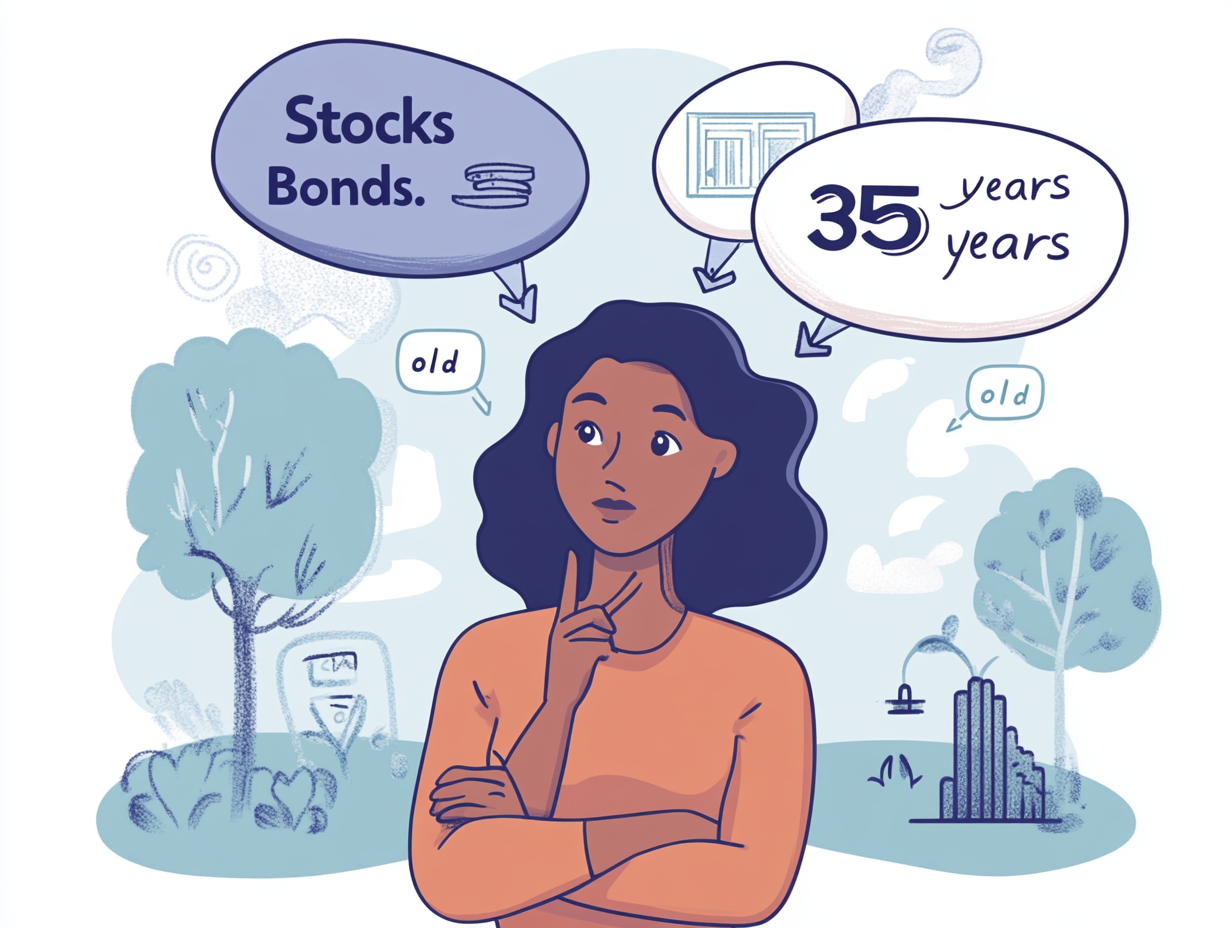Stocks vs. Bonds: Understanding the Key Differences and Which Might Be Right for You

When venturing into the world of investing, two fundamental asset classes often take center stage: stocks and bonds. These represent distinct ways to grow your capital, each with its own set of characteristics, risks, and potential rewards. Understanding the core differences between stocks and bonds is crucial for building a well-balanced investment portfolio that aligns with your financial goals, time horizon, and risk tolerance. This guide will break down the key distinctions between these two asset classes, helping you determine which might be the right fit for your individual investment strategy.
Stocks: Owning a Piece of the Pie
At its core, a stock (also known as a share or equity) represents ownership in a publicly traded company. When you buy a stock, you become a shareholder, entitled to a portion of the company's profits and assets.
- Potential for High Growth: Historically, stocks have offered the potential for significant capital appreciation over the long term. As a company grows and becomes more profitable, the value of its stock can increase, providing investors with substantial returns.
- Higher Volatility: The price of a stock can fluctuate significantly and rapidly due to various factors, including company performance, industry trends, economic conditions, and investor sentiment. This inherent volatility makes stocks a riskier investment compared to bonds.
- Dividends: Some companies distribute a portion of their profits to shareholders in the form of dividends. Dividends can provide a regular stream of income for stock investors.
- Voting Rights: As a shareholder, you may have voting rights in company matters, allowing you to participate in important decisions.
Think of buying a stock as becoming a part-owner of a business. Your success is tied to the success of that company.
Bonds: Lending Money for a Return
In contrast to stocks, a bond represents a loan you make to a borrower, which could be a government (federal, state, or local) or a corporation. When you buy a bond, you become a creditor, and the borrower promises to repay you the principal amount (the original loan) on a specific maturity date, along with periodic interest payments (known as coupon payments).
- Lower Risk (Generally): Compared to stocks, bonds are generally considered less risky. Borrowers are legally obligated to repay the principal and interest. However, there's still risk involved, such as the borrower defaulting (failing to repay).
- Lower Potential Returns (Generally): Due to their lower risk profile, bonds typically offer lower potential returns compared to stocks over the long term.
- Predictable Income Stream: The fixed coupon payments of bonds provide a more predictable stream of income for investors.
- Less Volatility (Generally): Bond prices tend to be less volatile than stock prices, making them a more stable investment option.
Think of buying a bond as lending money to an entity with the expectation of receiving your principal back plus interest.
Key Differences Summarized:
To further clarify the distinctions, here's a table summarizing the key differences between stocks and bonds:
Which Might Be Right for You? Factors to Consider:
Determining whether stocks or bonds (or a combination of both) are right for your portfolio depends on several individual factors:
- Your Age and Time Horizon: Younger investors with a longer time horizon (e.g., decades until retirement) can typically afford to take on more risk and may allocate a larger portion of their portfolio to stocks for higher potential growth. As you get closer to your financial goals (e.g., retirement), you might shift towards a more conservative allocation with a greater emphasis on bonds for stability and income.
- Your Risk Tolerance: As discussed earlier, your comfort level with market fluctuations plays a crucial role. If you are risk-averse and prioritize preserving capital, bonds might be a larger component of your portfolio. If you are comfortable with volatility for the potential of higher returns, stocks might be favored.
- Your Financial Goals: Your specific financial objectives will influence your asset allocation. If you are saving for a long-term goal that requires significant growth, stocks might be more suitable. If you need a more predictable income stream or are nearing a goal where preserving capital is paramount, bonds might be more appropriate.
- Current Market Conditions: While you shouldn't try to time the market, understanding the current economic environment and interest rate trends can inform your asset allocation decisions.
- Your Knowledge and Experience: Beginners might start with a more conservative allocation or consider diversified options like mutual funds or ETFs that hold a mix of stocks and bonds.

Building a Balanced Portfolio: The Power of Diversification
For most investors, the optimal strategy involves holding a diversified portfolio that includes a mix of both stocks and bonds. This approach aims to balance the potential for growth offered by stocks with the stability and income provided by bonds. The specific allocation (the percentage of your portfolio allocated to each asset class) will depend on the factors mentioned above.
- Example for a young investor: 70% Stocks / 30% Bonds
- Example for an investor nearing retirement: 40% Stocks / 60% Bonds
Diversification across different asset classes helps to reduce overall portfolio risk. When one asset class underperforms, the other might hold steady or even perform well, helping to cushion your overall returns.
Conclusion:
Stocks and bonds are the cornerstones of many investment portfolios, each offering unique characteristics and serving different purposes. Understanding their fundamental differences, along with your own financial circumstances and goals, is essential for making informed investment decisions. While stocks offer the potential for higher growth but come with greater risk, bonds provide stability and income with generally lower risk. For most investors, a well-diversified portfolio that strategically blends stocks and bonds is the most prudent approach to navigate the investment landscape and work towards achieving their long-term financial aspirations.



